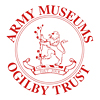
Photograph of Peter by kind permission of Mr Gerard Anderson

British War Medal
Peter was born between April and June 1877 in Manchester. He was named after his father. We don't know much about Peter's early life, but we do know he was raised a Roman Catholic.
By 1902 Peter was working as a General Labourer and was living in Manchester. On the 27th December of that year he married Mary Devaney at St Edmund's Roman Catholic Church in Newton Heath. Mary was 5 years older than Peter and had been widowed. She had four children; Agnes, Edith, Arthur and Winifred. Peter and Mary had two children of their own; Albert and Lillian.
In 1911 the family were living at 18 Boslam Street in Ancoats, Manchester. Peter was working as a Calender Hand at a cloth finishing company. We don't know which one. This job involved operating pressing and ironing machines to smooth the cloth.
In his spare time Peter was a keen sportsman. He played Football for his local team up until he joined the Army. He was also a bantam weight boxer. Peter was very proud to have once sparred with Joe Bowker. Joe was an extremely skilful boxer who was world bantamweight champion in 1904 and 1905.
When the First World War broke out in August 1914 Peter tried to enlist in the Army. He was turned down because he was shorter than the minimum height of 5 feet 3 inches. In the early days of the First World War there was a lot of pressure put on men to join the Army. Peter was one of many who were given white feathers by women. These were a symbol of cowardice and the women were hoping to shame Peter into joining the Army.
Thousands of men were in the same position as Peter, and soon 'Bantam' battalions were formed to allow them to serve. One of these battalions was the 8th City Battalion, formed in Manchester. It was taken into the Army as the 23rd Battalion of The Manchester Regiment.
Peter was one of the original members of this unit and was assigned to XIII Platoon of D Company. He was given the service number 22640, which tells us he enlisted in December 1914.
The 23rd Battalion was sent to France in January 1916. We don't know much about Peter's experiences in France. We do know that he fought at Armentieres. He was blown up once as well as being shot. He suffered one of these wounds on the Somme.
At some point Peter was transferred from the 23rd Battalion to the Labour Corps. This Corps was not formed until January 1917 so James would have stayed with the Manchester Regiment at least until then. It was made up of men who were no longer fit enough to serve as infantry in the front line. Peter had been promoted twice to Corporal by the time he was transferred. The Labour Corps gave him the service number 112810. We don't know which unit of the Labour Corps he served in or what his job was.
Peter left the Army in January 1919 and returned to the UK. As well as the British War Medal, Peter was awarded the Allied Victory Medal for his Army service.
The family lived at 115 Mills Street in Ancoats during the early 1920s. Mary died during the mid 1920s. Peter continued to live in Mill Street with Agnes and Lillian. Neither of them ever married. Peter died between October and November 1953. He was 76 years old.




